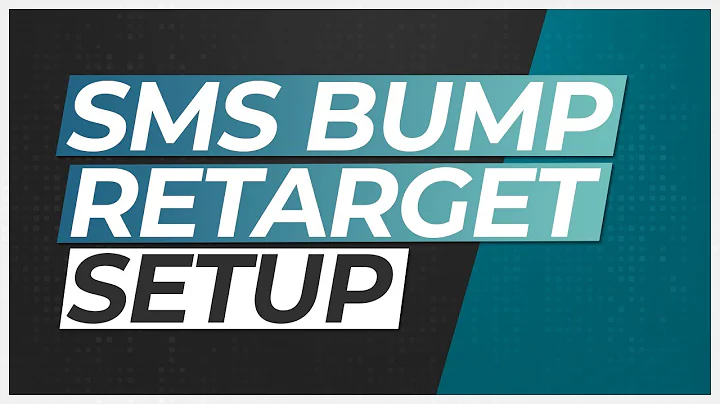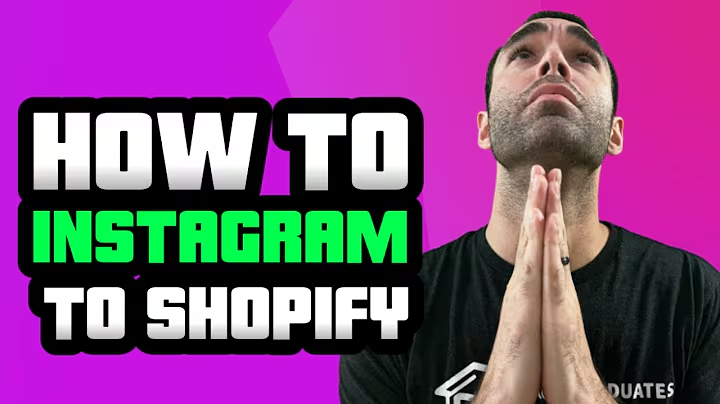Maximize Your E-commerce Potential: Shopify and Amazon Integration
Table of Contents
- Introduction
- Setting up a Shopify Account
- Setting up an Amazon Account
- Integrating Shopify and Amazon
- Fulfilling Orders
- Using Shopify for Print-on-Demand
- Selling Products Manufactured by Yourself
- dropshipping with Shopify and Amazon
- Pros and Cons of Selling on Amazon
- Using Shopify as an Additional Sales Channel
- Marketing Your Shopify Store
- Syncing Inventory between Shopify and Amazon
- Fulfillment for European Sellers
- Conclusion
Introduction
Welcome to the e-business boss Channel! In this article, we will guide you through everything you need to know about Shopify and Amazon. We will explore the various ways you can make money by integrating these two platforms. Whether you are looking to sell on the Amazon Marketplace through Shopify, use Amazon and Shopify for print-on-demand, or expand your sales channels, we have got you covered. So sit back, relax, and let's dive into the world of e-commerce.
Setting up a Shopify Account
To get started with Shopify, you will need to create an account. Simply click on the link in the description to access a 14-day free trial. Once you have set up your account, you are ready to embark on your e-commerce journey.
Setting up an Amazon Account
If you don't already have an Amazon account, it's time to create one. Keep in mind that there is a monthly fee of $39.99 for selling on Amazon. Additionally, make sure to obtain GS1 barcodes, as they are a requirement by Amazon. This attention to detail will help you avoid any issues that might arise with Amazon's strict policies.
Integrating Shopify and Amazon
Now that you have both a Shopify and Amazon account, it's time to connect them. On your Shopify dashboard, navigate to the Sales Channels section and click on the plus button. From there, select Amazon and follow the instructions to complete the integration. Please note that currently, this feature is only available for US sellers.
Fulfilling Orders
When it comes to order fulfillment, you have several options depending on your business model. For those using print-on-demand services, such as Printful or T-launch, you will need to set up an account with the chosen partner. Alternatively, if you manufacture your own products or work with a factory, you can either fulfill the orders yourself or opt for services like Amazon FBA or third-party fulfillment centers.
Using Shopify for Print-on-Demand
Print-on-demand is a popular business model that allows you to sell custom products without the hassle of inventory management. By integrating Shopify with print-on-demand partners like Printful or T-launch, you can easily create and ship products on-demand. Simply add the chosen partner's app to your Shopify store, and you are all set to start selling unique, personalized merchandise.
Selling Products Manufactured by Yourself
If you have products that you manufacture or have a partnership with a factory, Shopify can serve as an excellent platform to showcase and sell your items. With Shopify's robust backend, you can efficiently manage your inventory, track orders, and offer an overall seamless shopping experience to your customers.
Dropshipping with Shopify and Amazon
While dropshipping is a popular method, it might not be the best option when integrating Shopify and Amazon. The key issue lies in the limitations you would face when trying to find products to resell on Amazon. As a dropshipper, it is crucial to have access to a wide variety of products, which might not be readily available on Amazon. Therefore, it is advisable to consider other alternatives, such as sourcing from local suppliers or utilizing dropshipping platforms like Oberlo or Sprocket.
Pros and Cons of Selling on Amazon
When selling on Amazon, there are several advantages and disadvantages to consider. On the positive side, you can leverage the existing marketplace, tap into a wide customer base, and benefit from Amazon's trusted reputation. Additionally, you can avoid the need for expensive marketing campaigns, as Amazon already has the attention of potential buyers. However, keep in mind that you will have to bear the additional monthly expense of maintaining an Amazon account.
Using Shopify as an Additional Sales Channel
If you are already selling on Amazon and want to explore additional sales channels, Shopify can be an excellent choice. By setting up a Shopify store, you can increase brand exposure, gain control over your business, and minimize the risk of relying solely on Amazon. It provides an opportunity to diversify your revenue streams and build a brand that stands out in a competitive market.
Marketing Your Shopify Store
Once your Shopify store is up and running, it's time to drive traffic and generate sales. There are various marketing strategies you can implement, including search engine optimization (SEO), paid advertising, and social media engagement. By focusing on your target audience and providing valuable content, you can attract potential customers and increase your chances of conversion.
Syncing Inventory between Shopify and Amazon
To ensure accurate inventory management, it is essential to sync your inventory between Shopify and Amazon. By implementing this integration, you can automatically update stock levels and avoid overselling. While this feature is available to US sellers directly within Shopify, European sellers can opt for third-party apps like Order Desk to facilitate inventory synchronization.
Fulfillment for European Sellers
For European sellers, direct integration between Shopify and Amazon FBA is currently not available. However, you can still fulfill orders seamlessly by using third-party apps like Order Desk. These apps act as the communication bridge between Shopify and Amazon FBA, ensuring smooth order fulfillment and a positive customer experience.
Conclusion
In conclusion, integrating Shopify and Amazon can open up a world of opportunities for your e-commerce business. Whether you are just starting out or looking to expand your sales channels, these platforms provide the tools and resources needed to succeed in the online marketplace. By leveraging the benefits of Shopify's flexibility and Amazon's massive customer base, you can establish a strong online presence and maximize your revenue potential. So don't wait any longer - set up your Shopify account, connect with Amazon, and start reaping the rewards of this powerful integration.
Highlights
- Integrate Shopify and Amazon to maximize your e-commerce potential
- Choose from various fulfillment options based on your business model
- Utilize print-on-demand services for hassle-free product customization
- Sell products manufactured by yourself to maintain control and boost brand reputation
- Consider alternatives to dropshipping when using Shopify and Amazon together
- Leverage Amazon's existing marketplace while building your own brand on Shopify
- Drive traffic to your Shopify store through SEO, paid advertising, and social media
- Sync inventory between Shopify and Amazon for accurate stock management
- European sellers can benefit from third-party apps for seamless fulfillment with Amazon FBA
- The integration of Shopify and Amazon opens up endless possibilities for online success
Frequently Asked Questions
Q: Can I use Shopify and Amazon together?
A: Absolutely! Integrating Shopify and Amazon allows you to combine the benefits of both platforms and expand your e-commerce reach.
Q: Do I need a Shopify account to sell on Amazon?
A: While you don't necessarily need a Shopify account to sell on Amazon, integrating the two platforms can provide additional advantages and enhance your overall selling experience.
Q: What fulfillment options are available when using Shopify and Amazon together?
A: You have several fulfillment options, including print-on-demand services, handling fulfillment in-house, utilizing Amazon FBA, or partnering with third-party fulfillment centers.
Q: Is dropshipping a viable option when integrating Shopify and Amazon?
A: While dropshipping is a popular business model, it may not be the most suitable option when using Shopify and Amazon together. Consider other alternatives, such as sourcing from local suppliers or using dropshipping platforms specifically designed for this purpose.
Q: Can I sync inventory between Shopify and Amazon?
A: Yes, it is possible to sync inventory between Shopify and Amazon to ensure accurate stock management and prevent overselling. However, direct inventory synchronization is currently available only for US sellers. European sellers can explore the use of third-party apps for this purpose.
Q: How can I market my Shopify store effectively?
A: To market your Shopify store successfully, implement a combination of search engine optimization (SEO), paid advertising, and social media engagement. Focus on providing valuable content and targeting your ideal customers to drive traffic and generate sales.






















